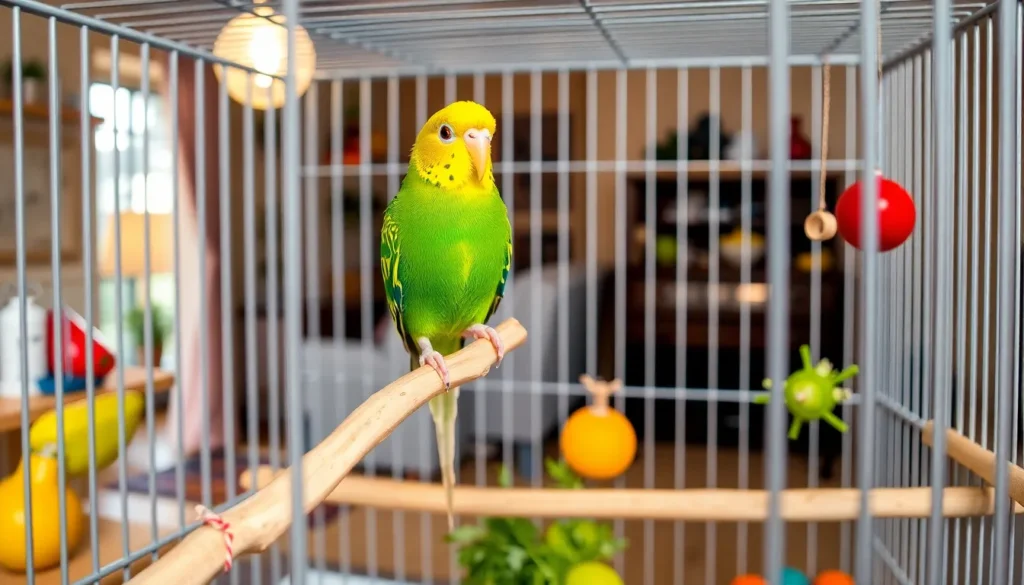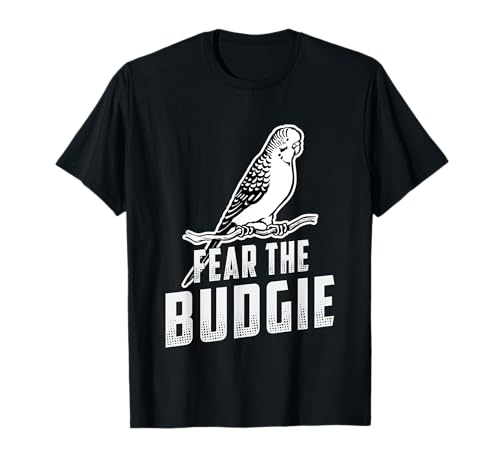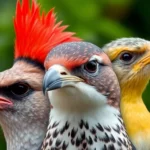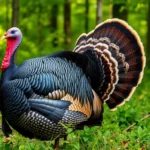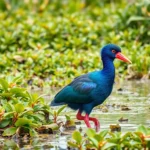The budgerigar – or “budgie” as we lovingly call them – has captured our hearts as one of the industry’s most beloved pet birds. These vibrant little parakeets from Australia pack enormous personality into their compact 7-inch frames, making them perfect companions for bird enthusiasts of all experience levels.
We’ve watched countless families fall in love with budgies’ playful nature, impressive intelligence, and surprisingly social behavior. Unlike many pets that simply exist in our homes, budgerigars actively engage with their human families, learning words, performing tricks, and even developing unique personalities that’ll keep you entertained for hours.
Whether you’re considering your first feathered friend or you’re already smitten with these charming creatures, understanding budgerigar care, behavior, and characteristics is essential for creating a thriving relationship. Let’s explore everything you need to know about these remarkable birds that have been bringing joy to households worldwide for generations.
What Is a Budgerigar Bird?
Budgerigars are small, colorful parakeets scientifically known as Melopsittacus undulatus that belong to the parrot family. These vibrant birds measure approximately 7 inches in length and weigh between 1.1 to 1.4 ounces, making them one of the most manageable pet bird species for households worldwide.
Physical Characteristics and Appearance
Wild budgerigars display distinctive bright green bodies with yellow heads and black barring across their wings and backs. Their tail feathers extend in a tapered formation with blue edges that create striking contrast against their primary coloring. Captive bred budgerigars come in over 30 color variations including blue, white, yellow, and pied combinations that result from selective breeding programs.
Males typically feature bright blue ceres (the fleshy area above their beaks) while females display brown or tan ceres that become more pronounced during breeding season. Their small black eyes are positioned on the sides of their heads, providing nearly 340-degree vision that helps them detect predators in their natural environment. Each budgerigar possesses unique throat spot patterns and barring designs that serve as individual identification markers within flocks.
Natural Habitat and Origins
Budgerigars originate from the arid interior regions of Australia where they inhabit open woodlands, grasslands, and scrublands across the continent. These nomadic birds travel in flocks of 100 to 1,000 individuals following seasonal rainfall patterns and food availability throughout their native range. They nest in hollow tree branches and logs, typically eucalyptus trees, where they raise their young during Australia’s breeding seasons.
European explorer John Gould first documented budgerigars in 1840, leading to their introduction to Europe and eventual worldwide distribution as companion birds. Wild populations maintain consistent green and yellow coloration that provides camouflage among Australia’s native vegetation, while their highly social nature creates complex flock dynamics that influence their behavior in captivity.
Budgerigar Bird Behavior and Personality
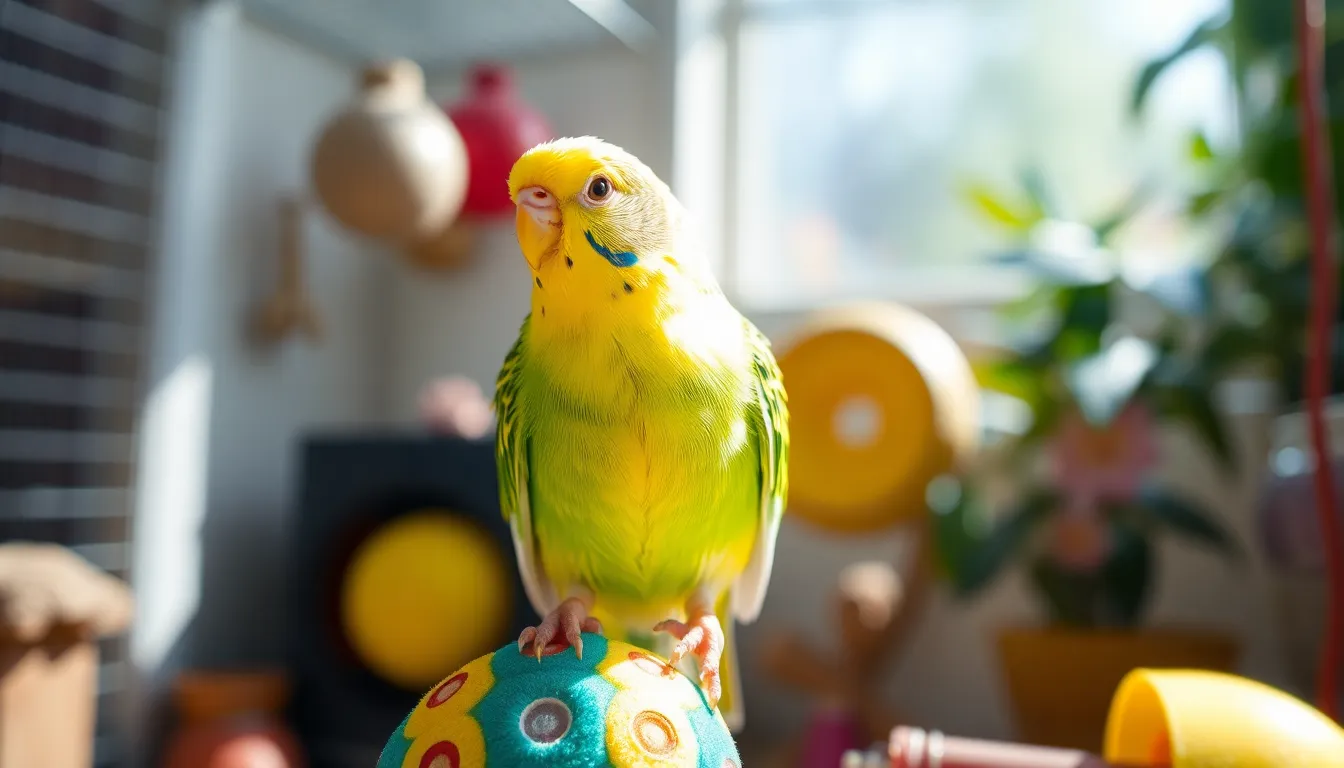
Budgerigars exhibit complex behavioral patterns that reflect their highly social nature and remarkable intelligence. These captivating birds display distinct personalities that make each budgie unique in its interactions with both humans and other birds.
Social Nature and Communication
Budgerigars are inherently flock-oriented creatures that thrive on social interaction and constant communication. Wild budgies live in groups ranging from 20 to 100 individuals, demonstrating their deep-rooted need for companionship. Pet budgerigars maintain these social instincts and often view their human caregivers as flock members.
Vocal communication forms the cornerstone of budgerigar social behavior. These birds produce over 15 distinct call types including contact calls, alarm calls, and territorial vocalizations. Budgerigars can learn and mimic human speech, with some individuals mastering vocabularies of 100+ words. Males typically demonstrate stronger talking abilities than females, though individual variations occur frequently.
Body language serves as another crucial communication method for budgerigars. Head bobbing indicates excitement or attention-seeking behavior, while wing fluttering often signals contentment. Beak grinding typically occurs before sleep and represents a relaxed state. Preening behaviors directed toward humans or other birds demonstrate affection and trust.
Budgerigars establish clear social hierarchies within groups through various behavioral displays. Dominant birds claim higher perches and access to preferred food sources first. Submissive behaviors include crouching, head lowering, and moving away from dominant individuals. These natural social structures help maintain order within budgerigar communities.
Intelligence and Learning Abilities
Budgerigars possess cognitive abilities that rival those of much larger parrot species. Research studies conducted at the University of Vienna demonstrated that budgerigars can learn abstract concepts and solve complex problems requiring multi-step reasoning. These birds score consistently high on avian intelligence tests measuring spatial awareness, pattern recognition, and memory retention.
Learning occurs rapidly in budgerigars through both observation and direct experience. Young budgies acquire essential skills by watching adult birds demonstrate foraging techniques, predator recognition, and social behaviors. This observational learning ability extends to human interactions, allowing pet budgerigars to adapt quickly to household routines and expectations.
Memory capabilities in budgerigars exceed expectations for birds of their size. Scientific research indicates budgerigars retain learned information for periods exceeding 8 months without reinforcement. Spatial memory proves particularly strong, with budgerigars accurately remembering food cache locations and safe roosting sites across extensive territories.
Problem-solving skills manifest in various ways throughout budgerigar behavior. These birds manipulate objects to access hidden treats, navigate complex obstacle courses, and devise creative answers to environmental challenges. Captive budgerigars often demonstrate tool use by employing sticks or other objects to reach desired items beyond their immediate grasp.
Training responses develop quickly in budgerigars due to their natural intelligence and eagerness to please. Simple commands like “step up” and “step down” typically require only 3-5 training sessions for most birds to master. Advanced tricks including retrieving objects, handling mazes, and performing sequences of behaviors can be taught with consistent positive reinforcement techniques.
Caring for Your Budgerigar Bird
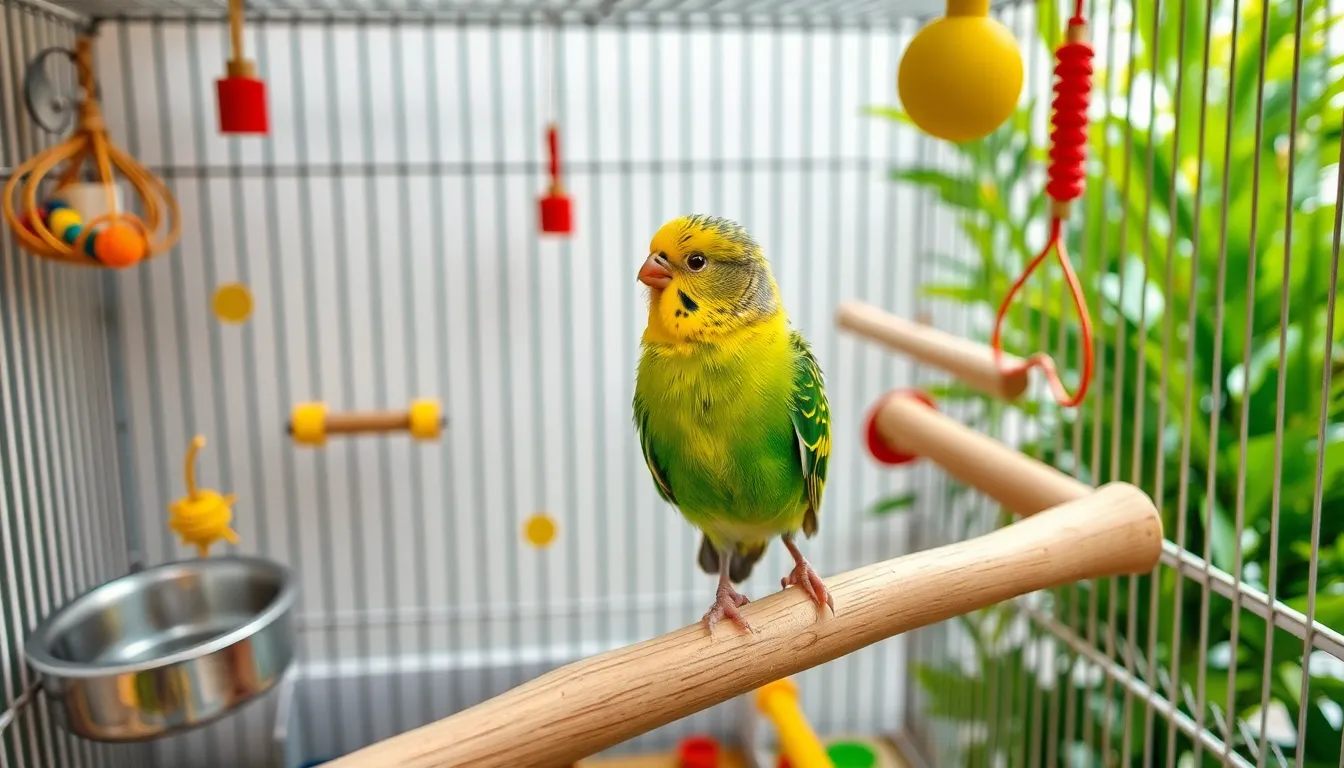
Caring for your budgerigar bird involves understanding their exact habitat requirements, providing proper nutrition, and ensuring adequate mental stimulation. These intelligent companions thrive when their caregivers address their physical and psychological needs through comprehensive care practices.
Housing Requirements and Setup
Cage Size and Specifications
A budgerigar bird requires a minimum cage size of 18 x 18 x 24 inches for a single bird, though larger dimensions provide better living conditions. Multiple budgerigars need cages measuring at least 30 x 18 x 24 inches to accommodate their social behaviors and flight patterns. Bar spacing between 0.4 to 0.6 inches prevents escape while allowing comfortable gripping for climbing activities.
Perch Selection and Placement
Natural wood perches like apple, willow, or eucalyptus branches offer varying diameters that promote healthy foot exercise and prevent arthritis. Position perches at different heights throughout the cage, ensuring 6 inches of clearance above the budgerigar’s head when standing upright. Avoid sandpaper perches that can cause foot injuries and bacterial infections over time.
Essential Accessories and Environment
Stainless steel food and water dishes resist bacterial growth and provide easy cleaning maintenance. Place toys like bells, mirrors, and foraging puzzles throughout the cage to encourage natural behaviors. Location matters significantly – position the cage away from direct sunlight, kitchen fumes, and high traffic areas while maintaining room temperatures between 65 to 75 degrees Fahrenheit.
Diet and Nutrition Needs
Primary Seed Mix Foundation
High quality seed mixtures containing millet, canary seed, and oats form the foundation of budgerigar bird nutrition, comprising 60% of their daily food intake. Commercial pellet diets offer balanced nutrition and prevent selective eating behaviors common with seed only diets. Fresh water changes daily prevent bacterial contamination and maintain optimal hydration levels.
Fresh Food Supplements
Dark leafy greens like spinach, kale, and dandelion leaves provide essential vitamins A, C, and K that support immune system function. Safe fruits including apples, berries, and melons offer natural sugars and antioxidants in small quantities 2 to 3 times weekly. Vegetables such as broccoli, carrots, and bell peppers supply beta carotene and fiber for digestive health.
| Nutritional Component | Daily Amount | Food Sources |
|---|---|---|
| Seeds/Pellets | 1-2 teaspoons | Millet, canary seed, commercial pellets |
| Fresh Vegetables | 1 teaspoon | Leafy greens, broccoli, carrots |
| Fresh Fruits | 0.5 teaspoon | Apples, berries, melons |
| Clean Water | Unlimited | Changed daily |
Toxic Foods to Avoid
Avocado contains persin, a compound fatal to budgerigars even in small amounts. Chocolate, caffeine, and alcohol cause severe neurological symptoms and death in these sensitive birds. Salt, garlic, and onions disrupt blood cell function and create digestive complications requiring immediate veterinary intervention.
Exercise and Mental Stimulation
Daily Flight Time Requirements
Budgerigars require 2 to 4 hours of supervised flight time outside their cage daily to maintain muscle tone and cardiovascular health. Create a bird safe room by removing ceiling fans, closing windows, and covering mirrors that might cause collision injuries. Flight exercise prevents obesity, strengthens wing muscles, and satisfies natural movement instincts developed in wild Australian habitats.
Interactive Toys and Enrichment
Foraging toys containing hidden treats encourage natural food seeking behaviors and prevent boredom related feather plucking. Rotate toys weekly to maintain novelty and interest, using puzzle feeders, rope toys, and wooden blocks for chewing activities. Interactive toys like bells and swings stimulate auditory senses while providing physical exercise through climbing and manipulation.
Training and Social Interaction
Target training using a chopstick teaches budgerigars to touch exact objects for treats, building trust and mental engagement. Step up training creates positive handling experiences that reduce stress during cage cleaning and veterinary visits. Social interaction through talking, whistling, and gentle handling satisfies their flock instincts and prevents behavioral problems like excessive screaming or aggression.
Health and Wellness of Budgerigar Birds
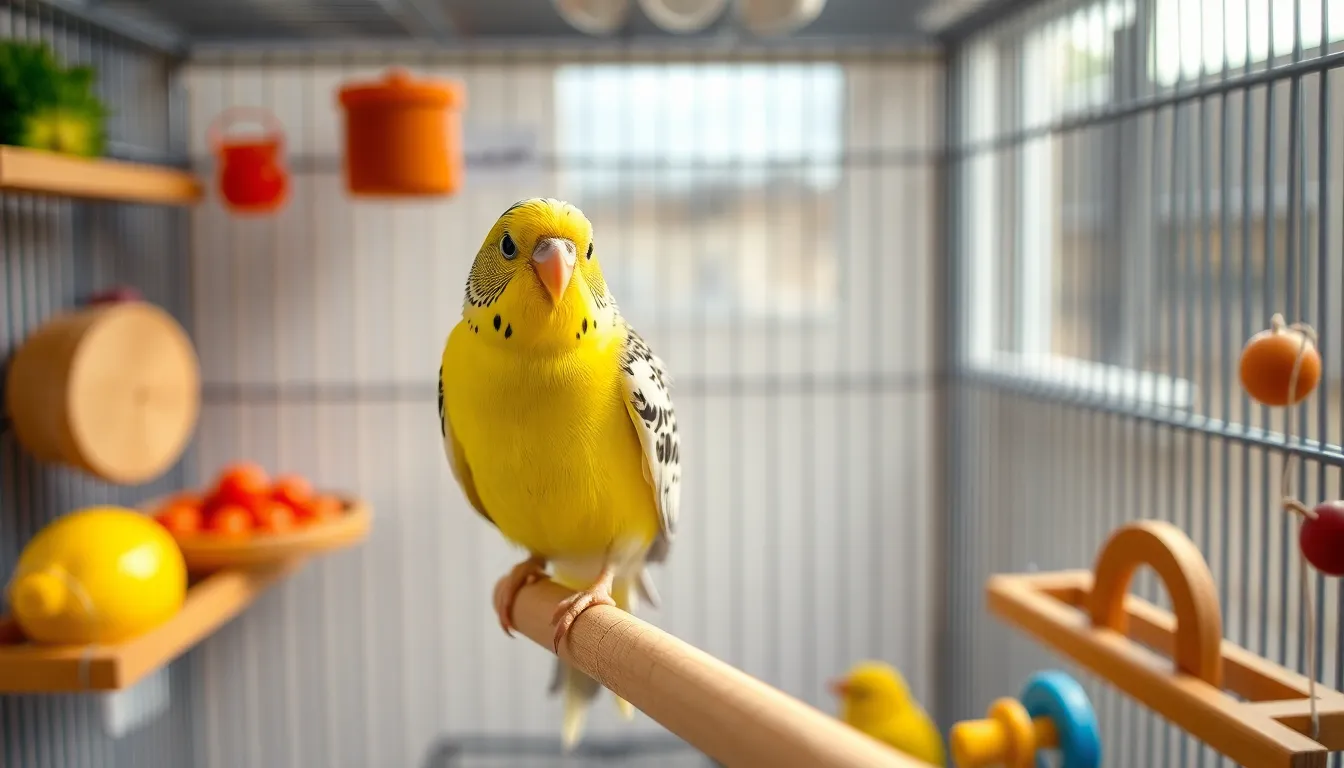
Maintaining optimal health in budgerigar birds requires vigilant observation and proactive care from dedicated owners. Understanding common health challenges and implementing preventive measures ensures these vibrant companions enjoy long, fulfilling lives.
Common Health Issues
Budgerigar birds experience several health conditions that owners must recognize early for effective treatment. Respiratory infections rank among the most frequent ailments, often caused by drafts, temperature fluctuations, or poor air quality in the living environment.
Respiratory Problems manifest through symptoms like wheezing, tail bobbing, and labored breathing. Aspergillosis, a fungal infection affecting the respiratory system, develops from exposure to moldy seeds or damp environments. We observe these symptoms appearing gradually, making early detection challenging but crucial for successful treatment.
Digestive Issues commonly affect budgerigars through bacterial infections or dietary imbalances. Crop stasis occurs when food remains in the crop for extended periods, creating bacterial growth and potential toxicity. Diarrhea results from stress, dietary changes, or bacterial overgrowth, often accompanied by lethargy and reduced appetite.
Parasitic Infections present important health risks to budgerigar populations. External parasites like mites cause feather loss, excessive scratching, and skin irritation around the face and legs. Internal parasites including roundworms and tapeworms lead to weight loss, poor feather condition, and digestive disturbances.
Nutritional Deficiencies create multiple health complications in budgerigar birds. Vitamin A deficiency causes respiratory infections, poor feather quality, and compromised immune function. Iron deficiency results in anemia, while calcium deficiency leads to egg binding in females and weak bone development.
| Health Condition | Primary Symptoms | Typical Causes |
|---|---|---|
| Respiratory Infection | Wheezing, tail bobbing, discharge | Drafts, poor air quality, stress |
| Crop Stasis | Vomiting, crop remains full | Bacterial infection, temperature issues |
| Mite Infestation | Feather loss, scratching, scaly face | Poor hygiene, infected birds |
| Vitamin A Deficiency | Respiratory issues, poor feathers | Seed only diet, lack of vegetables |
| Egg Binding | Straining, lethargy, distress | Calcium deficiency, young age |
Preventive Care and Veterinary Visits
Establishing regular veterinary care prevents serious health complications and ensures early detection of potential problems. Budgerigar birds require annual wellness examinations from avian veterinarians who specialize in bird medicine and understand their unique physiological needs.
Annual Health Examinations include comprehensive physical assessments, weight monitoring, and fecal testing for parasites. These visits allow veterinarians to detect subtle health changes that owners might miss during daily observations. Avian veterinarians perform blood work every 2 to 3 years to monitor organ function and detect underlying diseases.
Quarantine Protocols protect existing budgerigar populations when introducing new birds to the household. New budgerigars require 30 to 45 days of isolation in a separate room with independent air circulation. During quarantine, owners monitor for signs of illness and arrange veterinary examinations before integration with established birds.
Environmental Health Measures significantly impact budgerigar wellness and disease prevention. Maintaining cage cleanliness through daily spot cleaning and weekly deep cleaning eliminates bacterial growth and parasitic development. Air quality management involves removing aerosols, candles, and non stick cookware from the bird’s environment.
Nutritional Monitoring prevents deficiency related health problems through balanced diet maintenance. Fresh vegetables provide essential vitamins, while high quality pellets ensure complete nutrition beyond seed based diets. Clean, filtered water changed daily prevents bacterial contamination and supports proper hydration.
Emergency Preparedness enables quick response to health crises that require immediate veterinary attention. Signs requiring emergency care include difficulty breathing, bleeding, seizures, or inability to perch normally. We recommend identifying 24 hour avian emergency clinics before health emergencies occur, ensuring rapid access to specialized care when budgerigars face life threatening conditions.
Budgerigar Bird as a Pet
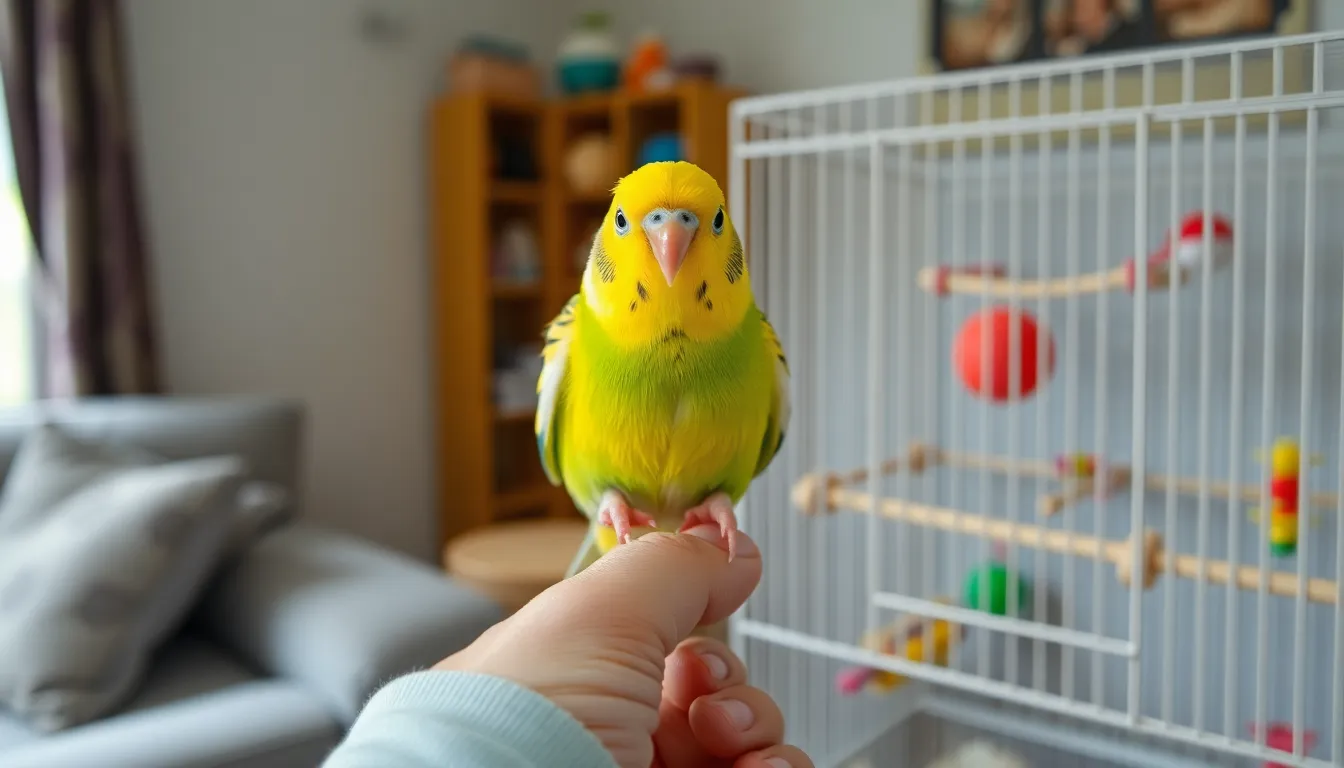
Budgerigars make exceptional companion birds for families seeking intelligent and interactive pets. These colorful parakeets offer remarkable personalities while requiring dedicated care and attention.
Pros and Cons of Ownership
Budgerigars deliver many advantages as household companions. Social interaction comes naturally to these birds, creating strong bonds with their human families while entertaining with their playful antics. Intelligence levels in budgerigars surpass many other small pet birds, allowing them to learn tricks, mimic speech, and recognize household routines. Cost effectiveness makes budgerigar ownership accessible compared to larger parrot species, with lower initial purchase prices and reduced ongoing expenses for food and supplies.
Longevity provides lasting companionship, as budgerigars typically live 5 to 10 years with proper care. Space requirements remain manageable since budgerigars thrive in medium-sized cages that fit comfortably in most homes. Vocalization patterns include pleasant chirping and singing rather than excessive screaming, making them apartment-friendly pets.
Challenges accompany budgerigar ownership even though their many benefits. Daily time commitment extends beyond basic feeding, requiring 2 to 4 hours of supervised interaction and exercise outside the cage. Mess creation becomes inevitable as budgerigars scatter seed hulls, molt feathers regularly, and occasionally have accidents during flight time. Veterinary care demands specialized avian knowledge, with fewer veterinarians trained in bird medicine compared to dog and cat specialists.
Noise levels fluctuate throughout the day, particularly during dawn and dusk when natural instincts trigger increased vocalizations. Temperature sensitivity requires careful environmental monitoring, as budgerigars struggle with sudden climate changes or drafty locations. Lifespan commitment spans nearly a decade, making budgerigar ownership a long-term responsibility that requires consistent dedication.
Training and Bonding Tips
Building trust forms the foundation of successful budgerigar training and bonding. Start interactions by speaking softly near the cage while allowing your budgerigar to observe your daily routines without forced contact. Patience during initial weeks allows naturally cautious birds to recognize you as a non-threatening presence rather than a predator.
Target training introduces basic commands using a chopstick or dowel to guide your budgerigar’s attention. Hold the target stick near your bird’s beak and offer verbal praise when they touch it, gradually extending the distance to encourage movement. Consistency in training sessions lasting 10 to 15 minutes twice daily produces faster results than lengthy, infrequent sessions.
Step-up training teaches budgerigars to climb onto your finger on command, establishing essential handling skills for cage maintenance and veterinary visits. Present your index finger horizontally at chest level while saying “step up” in a calm voice, gently pressing against their lower chest if they hesitate. Reward successful attempts with verbal praise or small treats like millet spray pieces.
Speech training begins with simple words repeated consistently during feeding time or play sessions. Choose words your budgerigar hears frequently, such as their name or “hello,” and repeat them clearly while making eye contact. Male budgerigars typically demonstrate stronger speaking abilities than females, though individual personalities influence learning capacity more than gender.
Bonding activities strengthen relationships through shared experiences outside structured training time. Include your budgerigar in household activities by placing their cage in family gathering areas during meals or television time. Gentle head scratches behind the ears create positive physical contact once trust develops, mimicking mutual preening behaviors observed in wild flocks.
Breeding Budgerigar Birds
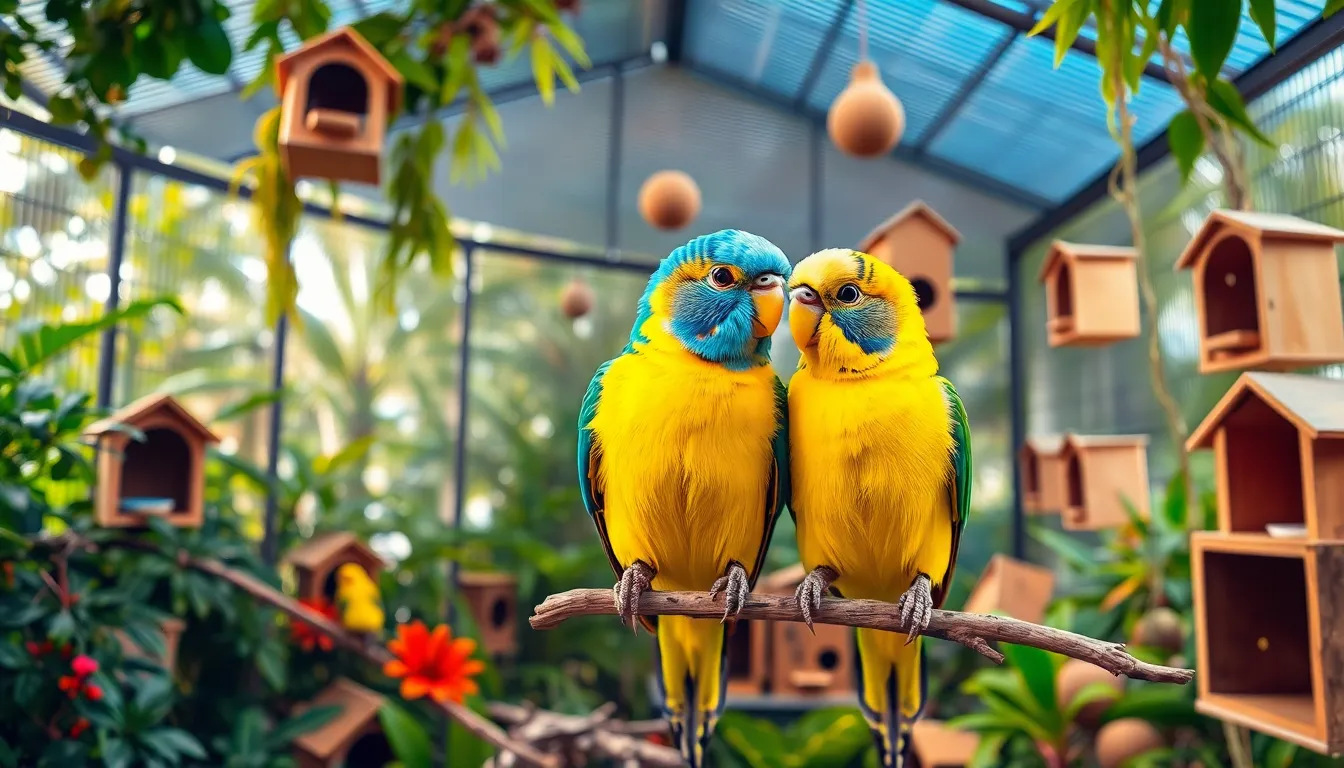
Breeding budgerigar birds requires careful preparation and understanding of their reproductive cycles. Female budgerigars reach sexual maturity between 4 to 6 months of age, while males typically mature slightly later at 6 to 8 months. We recommend waiting until birds reach 10 to 12 months before beginning breeding programs to ensure optimal health outcomes.
Selecting Breeding Pairs
Choosing compatible breeding pairs involves evaluating both physical health and genetic diversity. Birds selected for breeding must display vibrant plumage, clear eyes, and active behavior patterns. We examine the cere coloration to confirm gender identification, noting that breeding females develop darker brown ceres during reproductive periods.
Genetic considerations play a crucial role in producing healthy offspring. Pairing birds with different color mutations creates diverse clutches, while same-color pairings produce more predictable results. We avoid breeding closely related birds to prevent genetic complications and maintain strong immune systems in offspring.
Breeding Setup Requirements
Creating proper breeding environments involves installing appropriate nesting boxes and maintaining optimal conditions. Standard budgerigar nesting boxes measure 6 inches wide, 6 inches deep, and 8 inches tall with entrance holes measuring 1.5 inches in diameter. We position boxes at cage heights between 8 to 12 inches above the floor level.
Environmental conditions significantly impact breeding success rates. Temperature ranges between 65°F to 75°F create ideal breeding atmospheres, while humidity levels maintained at 50% to 60% support healthy egg development. We provide 12 to 14 hours of daily light exposure during breeding seasons to stimulate reproductive hormones.
Breeding Behavior and Egg Laying
Courtship behaviors in budgerigars include head bobbing, regurgitation feeding, and increased vocalizations between pairs. Males perform elaborate displays by spreading their wings and singing complex melodies to attract females. We observe these behaviors for 2 to 3 weeks before expecting egg laying to begin.
Female budgerigars typically lay 4 to 6 eggs per clutch with 48-hour intervals between each egg. Incubation periods last approximately 18 to 21 days, during which females spend 80% of their time on eggs. We monitor nesting boxes daily without disturbing the pairs to track development progress.
| Breeding Timeline | Duration | Key Events |
|---|---|---|
| Courtship Phase | 2-3 weeks | Pair bonding and displays |
| Egg Laying | 8-12 days | 4-6 eggs laid every 48 hours |
| Incubation | 18-21 days | Female sits on eggs continuously |
| Fledging | 28-35 days | Chicks leave nest box |
| Independence | 42-49 days | Young birds feed themselves |
Caring for Breeding Birds
Nutrition requirements increase significantly during breeding periods, demanding high-protein foods and calcium supplements. We provide breeding birds with egg food mixtures containing 18% to 20% protein content along with cuttlebone for calcium absorption. Fresh vegetables such as broccoli, spinach, and carrots supply essential vitamins for reproductive health.
Stress reduction becomes critical during breeding cycles since environmental disturbances can cause egg abandonment or chick rejection. We maintain quiet surroundings near breeding cages and limit human interaction to essential care activities. Room temperature stability prevents thermal stress that disrupts incubation processes.
Chick Development and Hand Feeding
Newly hatched budgerigar chicks weigh approximately 1 gram and remain completely dependent on parental care for 10 to 14 days. Eyes open between days 7 to 10, while pin feathers emerge around day 12. We begin monitoring chick weights daily using digital scales accurate to 0.1 grams.
Hand feeding becomes necessary when parents reject chicks or clutch sizes exceed parental capacity. Commercial hand feeding formulas mixed at temperatures between 102°F to 106°F provide complete nutrition for growing chicks. We feed chicks every 2 to 3 hours during daylight periods using sterilized feeding syringes.
Fledging occurs between 28 to 35 days when young birds develop sufficient flight feathers and coordination. Newly fledged budgerigars continue receiving parental feeding for an additional 2 to 3 weeks while learning independence skills. We separate young birds from breeding pairs once they demonstrate consistent self-feeding abilities.
Common Breeding Challenges
Egg binding represents a serious condition where females cannot expel eggs naturally, requiring immediate veterinary intervention. Environmental factors such as low humidity, inadequate nutrition, or stress trigger this potentially fatal complication. We maintain emergency contact information for avian veterinarians experienced with budgerigar breeding issues.
Aggressive behaviors between breeding pairs occasionally result in feather plucking or physical injuries. Territorial disputes over nesting sites cause some pairs to fight rather than cooperate in raising offspring. We provide multiple nesting options and separate incompatible pairs to prevent ongoing conflicts.
Cannibalistic tendencies emerge in stressed or inexperienced parents, leading to chick mortality in breeding colonies. Poor nutrition during breeding seasons contributes to this destructive behavior pattern. We ensure adequate protein sources and monitor parent birds for signs of aggressive behavior toward offspring.
Conclusion
Budgerigars truly represent one of nature’s most delightful gifts to the industry of companion birds. Their combination of intelligence social nature and vibrant personalities makes them exceptional pets for families seeking a feathered friend that’ll bring years of joy and companionship.
We’ve explored every aspect of budgie ownership from their fascinating Australian origins to the intricacies of breeding and care. These remarkable little parrots prove that great things come in small packages offering big personalities in compact colorful bodies.
Whether you’re considering your first budgie or looking to expand your flock remember that success comes through understanding their needs and respecting their intelligence. With proper care attention and love budgerigars will reward you with their charming antics melodic songs and unwavering loyalty for many years to come.
Frequently Asked Questions
What is a budgerigar?
A budgerigar, commonly called a “budgie,” is a small, colorful parakeet native to Australia. Scientifically known as Melopsittacus undulatus, these intelligent birds measure about 7 inches in length and weigh 1.1 to 1.4 ounces. They’re popular pets worldwide due to their engaging personalities, social behavior, and manageable size.
How can I tell if my budgie is male or female?
You can distinguish male and female budgerigars by examining their cere (the fleshy area above the beak containing the nostrils). Males typically have bright blue ceres, while females display brown or tan colored ceres. This difference becomes more pronounced as the birds reach sexual maturity.
What do budgerigars eat?
Budgerigars require a balanced diet consisting of high-quality seed mixes, fresh vegetables, and fruits. Avoid toxic foods like chocolate, avocado, and caffeine. Their diet should include variety to prevent nutritional deficiencies, with fresh water available daily. Pellets can supplement seeds for optimal nutrition.
How much space do budgerigars need?
Budgerigars need spacious cages with room to spread their wings and move freely. The minimum cage size should allow for flight movement, with horizontal space being more important than height. Natural perches and appropriate accessories should be included, plus 2-4 hours of supervised flight time daily.
Are budgerigars social birds?
Yes, budgerigars are highly social creatures that thrive on interaction. In the wild, they live in large flocks and establish social hierarchies. As pets, they often view their human caregivers as flock members and need daily social interaction to prevent loneliness and behavioral issues.
How long do budgerigars live?
With proper care, budgerigars typically live 5-10 years in captivity, though some can live longer with excellent care. Their lifespan depends on factors like diet, exercise, veterinary care, genetics, and environmental conditions. Regular health checkups and preventive care can help maximize their longevity.
Can budgerigars learn to talk?
Yes, budgerigars are capable of learning words and phrases, though not all individuals will talk. They communicate through vocalizations and body language naturally. With patience and consistent training, many budgies can learn to mimic human speech, whistle tunes, and respond to their names.
What are common health problems in budgerigars?
Common health issues include respiratory infections, digestive problems, parasitic infections, and nutritional deficiencies. Signs of illness include changes in appetite, breathing difficulties, lethargy, or unusual behavior. Regular veterinary checkups and maintaining clean environments help prevent many health problems.
Do budgerigars make good pets for beginners?
Yes, budgerigars are excellent pets for beginners due to their manageable size, intelligence, and social nature. They’re cost-effective compared to larger parrots and have pleasant vocalizations. However, they require daily attention, proper nutrition, and mental stimulation to thrive as companion animals.
Can I breed budgerigars at home?
Budgerigars can be bred at home with proper preparation and knowledge. They reach sexual maturity around 4-6 months old. Successful breeding requires compatible pairs, appropriate nesting boxes, optimal environmental conditions, and understanding of courtship behaviors, egg-laying patterns, and chick development stages.

